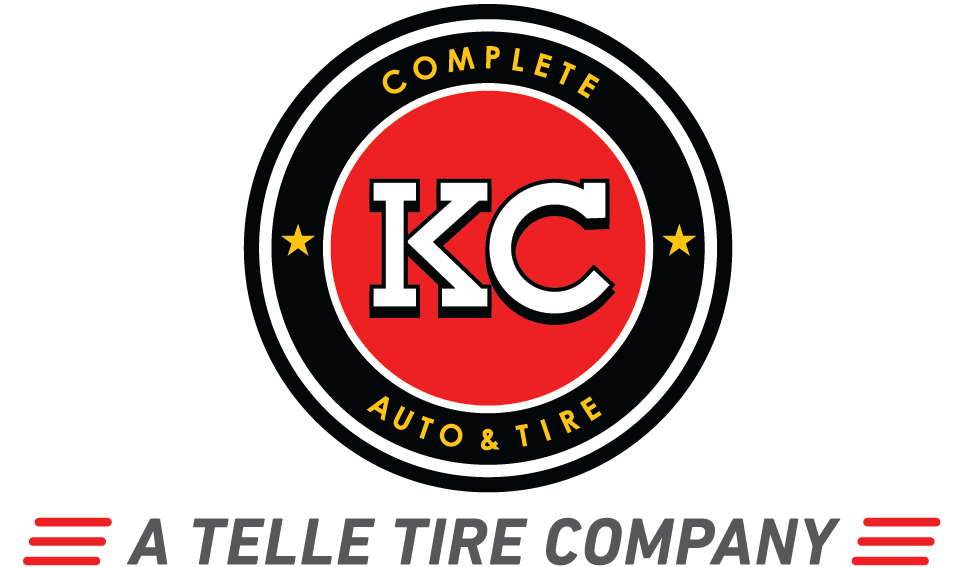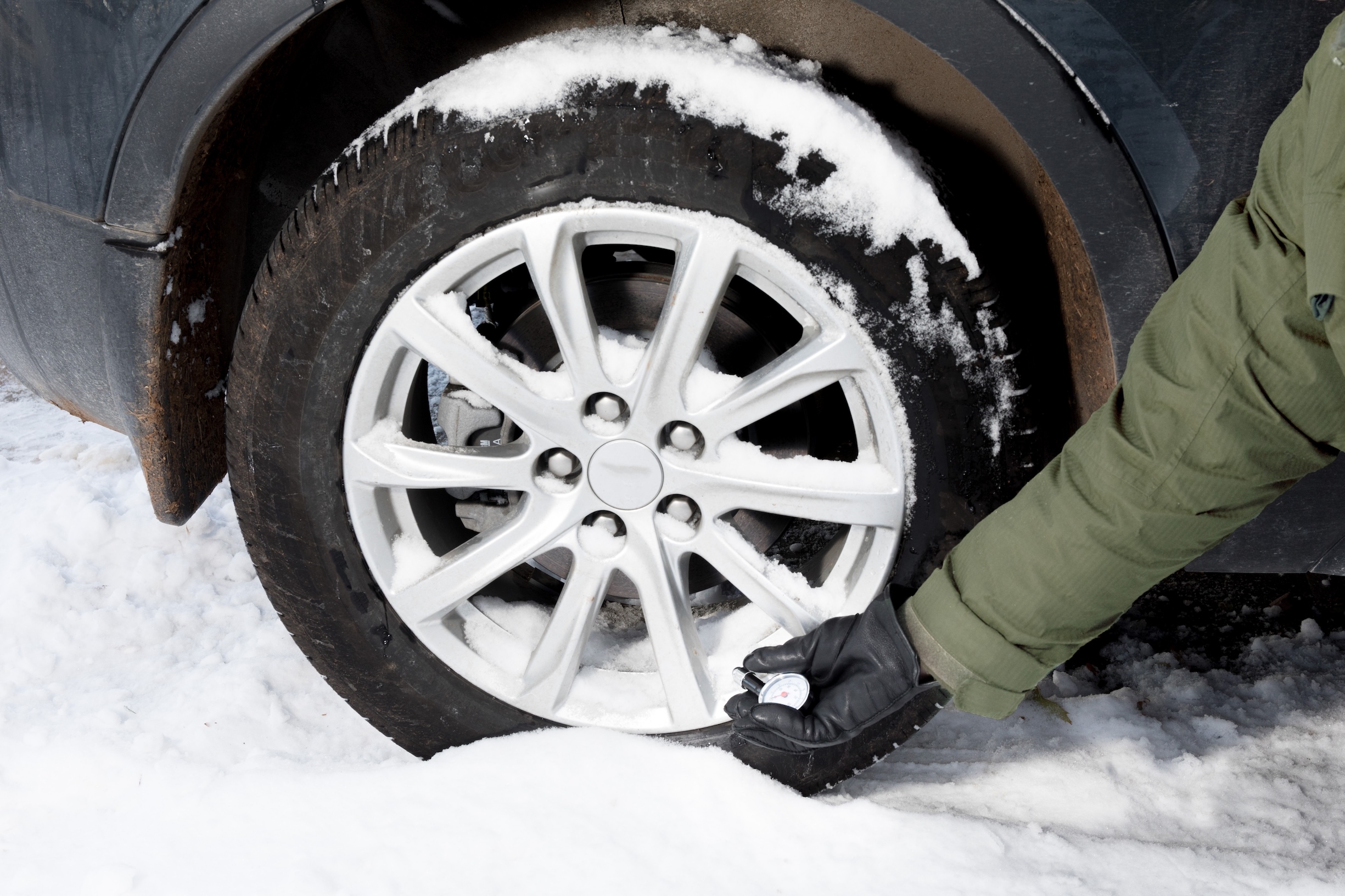How Much Does Proper Tire Inflation Save You in Winter?
The cold winter months bring a unique set of driving challenges, requiring extra safety precautions and optimal vehicle performance—and not all of it involves snow and ice. One of the most overlooked winter driving concerns is your tires’ inflation. You’ve most likely encountered the sudden air pressure drop with the arrival of frigid temperatures, but how much does that really matter?
Proper tire pressure is critical for maintaining road safety, reducing fuel costs, and extending tire life. Understanding the relationship between inflation and winter driving and maintaining optimal tire pressure will ensure a better driving experience and help you save money.
Understanding Tire Inflation and Its Impact on Winter Driving
What Is Tire Inflation and Why It Matters in Winter
Tire inflation is the level of air pressure inside your tires, measured in pounds per square inch (PSI). Maintaining the manufacturer’s recommended PSI is essential for vehicle stability, fuel efficiency, and tire longevity.
In winter, colder temperatures cause air molecules to contract, leading to a drop in tire pressure. For every 10-degree Fahrenheit temperature drop, tire pressure can decrease by about 1-2 PSI. Even these seemingly small drops can significantly affect performance, making it necessary to check and adjust tire pressure as needed regularly.
Tire Inflation and Winter Safety
Driving on under-inflated tires in winter can compromise handling, braking, and overall road safety. When tire pressure is too low, the contact patch between the tire and the road increases, leading to higher rolling resistance and decreased fuel efficiency. More importantly, under-inflated tires reduce traction on icy and snowy roads, increasing the risk of skidding or losing control. On the other hand, properly inflated tires ensure better grip and safer handling in harsh winter conditions.
Some drivers believe that the trick of driving on underinflated tires used by off-road and beach drivers translates to winter driving. These drivers utilize this method to increase the tires’ surface area when driving across dirt, mud, and sand to prevent sinking in, then reinflate when returning to pavement. While this may work in off-road scenarios, it does not translate well to winter driving, as this is when you want your tires to dig in to better maintain traction. Remember: Your winter or all-season tires were designed to perform optimally at proper inflation pressure.
Tire Pressure Winter Savings: How Proper Inflation Reduces Costs
Beyond safety, maintaining the correct tire pressure offers substantial cost savings. Under-inflated tires create excessive rolling resistance, forcing your engine to work harder for each rotation and consume more fuel. Researchers found that driving with tires inflated to 75% of their recommended air pressure decreased fuel efficiency by roughly 2% to 3%. Decreasing it to about 50% of the recommended air pressure lowered fuel efficiency by up to 10%, depending on driving speed.
Proper inflation can improve gas mileage and ensure tire wear evenly, lowering the chances of needing early replacements and reducing long-term maintenance costs.
How Cold Weather Affects Tire Inflation
Cold temperatures cause air to contract, leading to a natural loss of tire pressure. This means that a tire that was properly inflated in mild weather may become under-inflated when temperatures drop. Driving in fluctuating midwestern temperatures, you’ve likely noticed a low tire pressure warning on a cold morning, only to have it return to normal as the weather warms. However, if it stays low, you could be doing yourself and your vehicle a disservice, putting you at risk of decreased vehicle performance, higher fuel consumption, and increased risk of tire damage.
Tire Inflation Benefits Beyond Fuel Savings
Properly inflating your tires offers multiple advantages beyond just saving fuel. It helps:
- Prevent excessive tire wear, extending the life of your tires and reducing replacement costs
- Minimize stress on the tire structure, lowering the risk of blowouts and mechanical failures
- Provide a more comfortable ride for a safer, more enjoyable winter driving experience
The Safety Advantages of Correct Tire Pressure in Cold Conditions
Improved Handling and Braking
Properly inflated tires provide better traction, especially on snow-covered or icy roads. Winter tires and some all-season tires were designed with what’s referred to as a “biting edge” that is meant to dig into the snow for greater control, even in snowy and icy conditions. Correct tire pressure helps maintain an even footprint on the road for these features to work, offering better handling and more effective braking. This also helps reduce the risk of skidding and sliding, which can lead to accidents.
Tire Inflation and Road Safety: Preventing Blowouts and Loss of Control
Driving on under-inflated tires increased the likelihood of blowouts, particularly in harsh winter conditions. Low tire pressure causes excessive flexing, generating heat that weakens the tire structure. Maintaining the correct PSI helps prevent sudden tire failures and reduces the chances of losing control on slippery roads.
How to Maintain Proper Tire Inflation in Winter
Checking Tire Pressure in Cold Weather
To keep your tires in top condition during winter, follow these best practices:
- When checking tire pressure, do so when they are cold. The heat from driving can cause temporary expansion, making it seem like they are already properly inflated.
- Use a high-quality tire pressure gauge to get accurate readings. Even if your vehicle has a tire pressure monitor system (TPMS), it’s recommended that you verify the pressure manually to ensure its accuracy.
- Compare your readings with the vehicle manufacturer’s recommended PSI. This information can be found in your vehicle’s manual or inside the driver’s door. Be sure to check the number for all four tires, as the air pressure requirements for the front and rear tires may differ.
- Reinflate the tires as needed to maintain optimal pressure throughout the season.
- If your vehicle has a spare tire, check its pressure as well to ensure it is ready to go in the event you need to use it.
The Role of Tire Pressure Monitoring Systems (TPMS)
Most modern vehicles have tire pressure monitoring systems, or TPMS, that alert drivers when the tire pressure drops below recommended levels. TPMS is a valuable tool for maintaining tire health and improving winter safety. However, it’s still important to manually check tire pressure as some systems will only activate when the pressure drops significantly. If you have discovered that your vehicle’s TPMS is showing different numbers than what you see using a manual tire gauge, you’re questioning the accuracy of your readings, or you’re having issues maintaining adequate inflation pressure, seek a professional tire pressure inspection with the experts at Telle Tire.
Tips for Winter Tire Care
The back-and-forth with your tires’ air pressure can be an exhausting battle you fight all winter long, but there are some things you can do to help your tires (and your sanity) make it through the season:
- Adjust your tires’ inflation based on the outdoor temperatures to compensate for pressure loss. Remember, when the weather warms, you may need to relieve some of the air to prevent the tire from suddenly becoming over-inflated.
- If you have not yet done so, consider switching to winter tires. They are designed with specialized rubber that performs better in cold temperatures for improved traction and less frustration.
- When possible, store your vehicle in a garage to minimize exposure to extreme cold.
- Schedule regular maintenance checks to ensure optimal tire and vehicle performance throughout the winter and beyond.
Ensure Your Tires Pressure is Good with Telle Tire
Properly inflated tires are crucial for winter safety, fuel savings, and longevity. Maintaining the correct PSI can enhance your vehicle’s handling, reduce the risk of accidents, and lower overall driving costs. Don’t let cold weather compromise your safety—check your tire pressure regularly and make necessary adjustments.
For expert tire services and winter tire care, visit your local Telle Tire location today. Our professionals can help you maintain optimal PSI and ensure your vehicle is ready for winter’s harshest conditions. Schedule your tire inspection with Telle Tire and drive confidently all season long!


